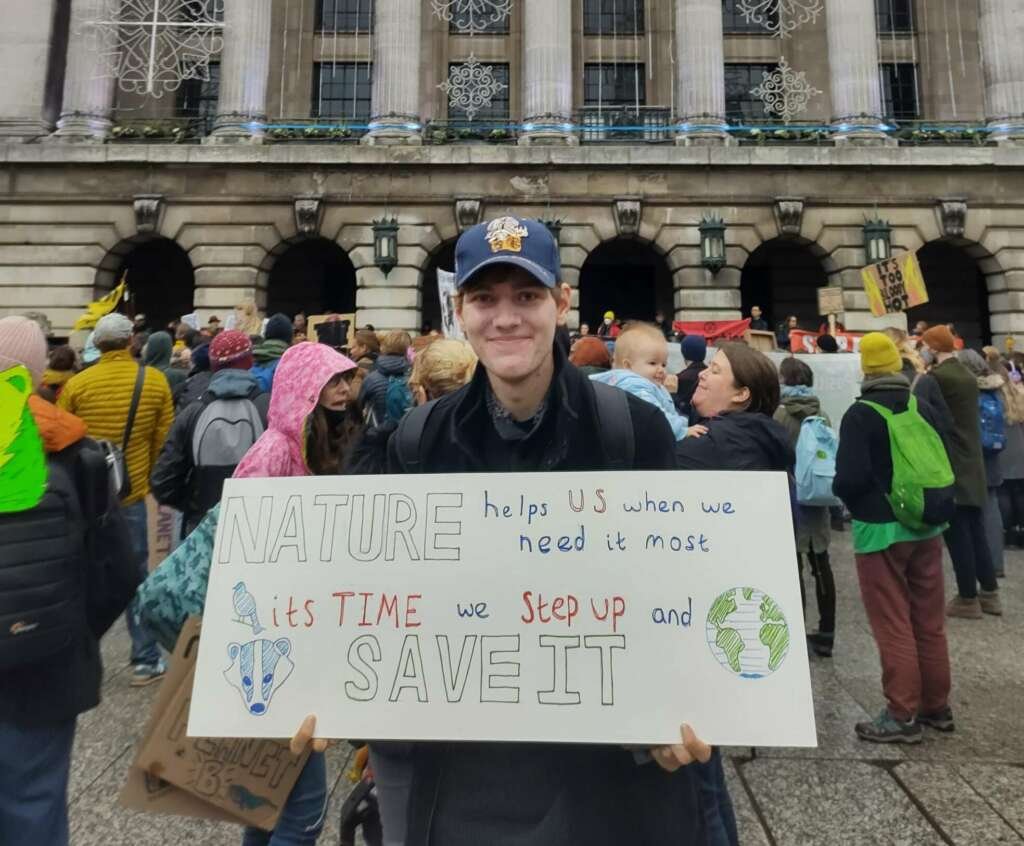Is Nature Forgotten in the Climate Crisis?
Nature is all around us. It comforts us. It inspires us. It is part of us.
We sometimes struggle to find constants - things that stay with us - throughout our lives. But whether it's the sway of the leaves or grass, or even the flutter of a small bird - nature is always there to be found at our very doorsteps.
Yet nature’s presence is often taken for granted. This apathy has allowed its decline and means that nature may no longer seem ever-present. Nevertheless, it is this decline that should spur us to remember and care for it even more, moving us to ensure that future generations can experience the simple tranquillity of the world that we too often have not. Once a common sight across fields and by rivers, the splendid lapwing has sadly declined by over 80% since 1960 in the UK (with fewer than 100,000 breeding pairs) due to a range of factors, particularly changes in farming practices and their habitats. They are categorised as Near Threatened on a global level by IUCN, and Vulnerable across Europe, indicating the challenges that the species is facing.
Northern Lapwing (Vanellus vanellus), RSPB Titchwell Marsh
Photoby Curtis Burbidge
Lapwings are medium-to-large sized black and white wading birds with a wonderful tuft and iconic flight that inspired their name. They are enchanting creatures, flaunting iridescent wings and a song reminiscent of a novelty whistle!
Sadly, changes in human land management have encouraged this decline. Lapwings primarily breed on grasslands and arable fields, nesting on the surface. Homogenisation of agricultural land, reduced crop rotations, and chemical usage have all impacted their breeding success. Like many birds, Lapwings feed on insects, so have also been impacted by overreliance on insecticides and the effects of changing climates on insect numbers.
Although many presume that birds nest in trees, many species are ground-nesters. This makes them increasingly vulnerable to human disruption. Farming practices are a considerable danger, but building developments and general human activity can also prevent successful nesting (individually, we can protect such species by sticking to marked paths and keeping dogs on leads). You might have not seen lapwings, but what about house sparrows? These small birds are one of the most numerous species across Europe and internationally, with over 500 million found globally. In fact, in 2022, they topped RSPB’s Big Garden Birdwatch (a citizen science census that counts garden birds in the UK). Nevertheless, they too have witnessed a significant decline – with populations falling by over 70% since the 1970s in the UK, and with a drop of nearly 250m individual house sparrows across Europe since the 1980s.
Figure 2 - [Male] House Sparrow (Passer Domesticus)
Photo by Curtis Burbidge.
House sparrows are small brown birds with a thick bill and pale underbelly. The males exhibit a grey and chestnut crown, whereas the females are lighter. They may not have the most extravagant call or song, but they are a quintessential suburban bird that everyone can admire. But these chittering birds also boost our well-being, with studies showing that seeing and hearing birds actively boosts our happiness – and could even be an effective treatment for mental health conditions.
Nevertheless, like the Lapwing, their decline has been significantly impacted by human activity, including changing farming practices, loss of habitat (removal of hedgerows and improved guttering where they often nest), and pollution.
Why is this decline significant?
In 1996, there were 36 species on the British red list (a publication that tracks birds that are globally threatened, or have declined by over 50% over 25 years etc.). There are now 70 species on the red list, indicating the challenges that Britain’s domestic species are facing, as well as birds globally.
Birds are one of the greatest indicators of environmental change. We are already witnessing changes in the migratory patterns of birds, such as fewer winter visitors, or on the alternative, birds such as Spoonbill expanding their territories or settling northwards rather than migrating to Africa in the Winter. These changes mark the worrying shifts in climate and highlight the growing risk of ecosystems becoming altered irreversibly.
Despite this, nature is often an afterthought in political discussions on the environment and climate, at a time when action couldn’t be more necessary. As politics focuses on the immeasurable scale of change that is needed, the simple beauty and significance of nature is often forgotten.
However, things can change. Nature is central to regeneration – it is at the forefront of many ground-breaking initiatives to improve the planet. From wetland restoration, which supports biodiversity and offers an incredible natural form of carbon sequestration, to natural phenomena inspiring innovative new technologies, nature can help us fight climate change.
Nature is an inspiring and moving force. Just as it plays a role in healing the planet, we know the impact it can and does have on our well-being. Nature is something that we must act to support, and use to encourage us and ground us to recognise why we are part of this fight.
We need to learn more about the nature around us, and take action to protect it. Just as we save nature, nature saves us.
Curtis Burbidge is an International Relations and Politics Student, and budding environmentalist and photographer.



